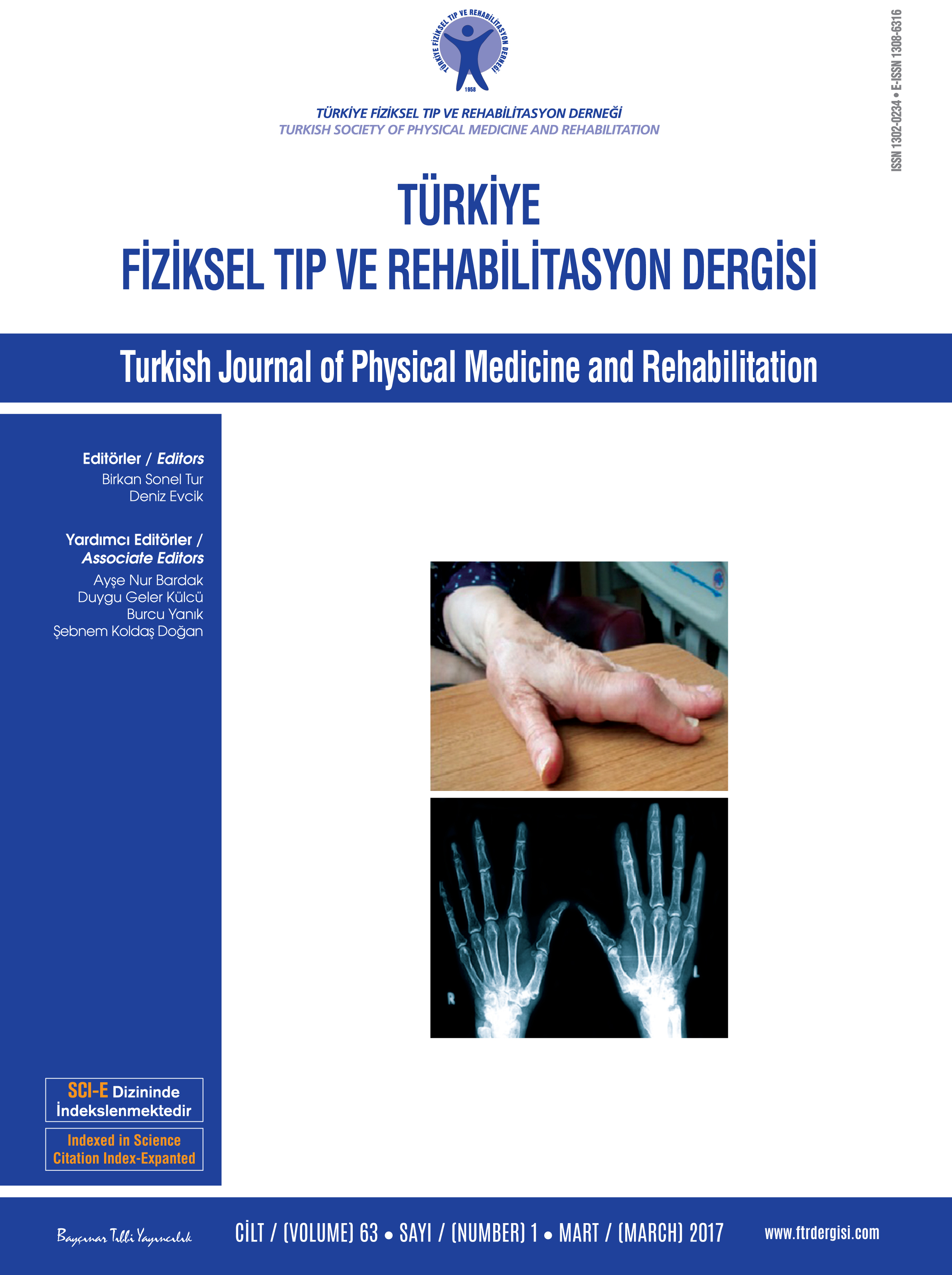The exercise tolerance test in stroke patients and the evaluation of influencing factors
Patients and methods: This study, which was conducted between December 2012 and August 2014, included 42 patients (27 males; 15 females; mean age 54.4±14.3 years) who were admitted to and hospitalized at the rehabilitation clinic between the first two weeks and six months since the date of the stroke, who had sitting balance or were suitable to undergo ambulation. Age, gender, dominant hand, hemiplegic side, disease duration, comorbidities, drugs, premorbid exercise habits and tobacco use of the patients were recorded. Cycling ergospirometry was performed to determine the exercise capacity of the patients. After the test, maximum oxygen uptake (VO2) reached, metabolic equivalent, time spend in the test (EET time), load at the time test was finalized, Borg Scale that indicates the patient’s degree of strain, maximal heart rate reached, forced expiratory volume at first second (FEV1), forced vital capacity (FVC) and FEV1/FVC values were recorded.
Results: We determined that of the patients, 43% had hypertension, 35% had coronary artery disease, 33% had diabetes, 29% had beta-blocker usage, 30% had cigarette smoking, 40% had right hemiparesis and 6% had regular exercise habits. We found that the use of beta-blockers was the only ETT effective factor among all parameters. Atrial fibrillation was developed in one patient as a side effect.
Conclusion: When creating an exercise plan, the consideration of the patients’ beta blocker use is important for the calculation of target heart rate.
Keywords : Aerobic exercise; exercise tolerance test; stroke

















